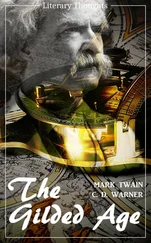Moreover, despite his frequent invocations of terms like g roup evolutionary strategy, a reference to the work of Cal State Long Beach psychology professor Kevin MacDonald, whose book The Culture of Critique: An Evolutionary Analysis of Jewish Involvement in Twentieth-Century Intellectual and Political Movements has become an upscale touchstone of the present-day ZOG/eugenics movement, Denier Bud wanted to make clear he was in no way “a raging anti-Semite or some skinhead.” He knew a lot of “cool Jewish guys” and said that if Hitler walked up to him in the street, he’d “spit in his eye.” Hitler was “a murderer,” one more murderer in an age of murderers. An avowed pacifist, Denier Bud had nothing but contempt for the militarist side of Nazi ideology. All he was interested in was “the truth.” To make sure there was no mistake about it, he inserted a flower-bedecked hippie peace symbol into the preamble of Nazi Shrunken Heads, over which he says he wishes “only good vibes” to the Jews of the world.
“It is my goal to lead the Holocaust denier movement away from the stench of anti-Semitism,” Denier Bud proclaimed. “I don’t think the Jews should be punished or suffer unduly for continuing to spread the lie of what happened to them during World War Two. They were a society under stress, so it is easy to sympathize with their motives. What I’m looking for is a Jew-friendly solution to the Holocaust hoax problem.”
Despite this spirit of outreach, YouTube, in keeping with their policy against Holocaust denying, had banned Nazi Shrunken Heads and several of Bud’s other videos. These included One Third of the Holocaust, a multi-hour attempt to explain away the well-documented history of the Aktion Reinhard camps—Treblinka, Sobibor, and Belzec—where nearly two million Jews were killed. One Third of the Holocaust, a tedious mélange of hokey computer graphics and half-baked arguments, captures none of the madcap offensiveness of Nazi Shrunken Heads . However, being a Jew of my particular stripe, I was outraged that YouTube, which seems to have no problem showing any manner of degrading imbecility and cruelty, refused to play it.
Denier Bud, who said he’d come to Holocaust denying in his early twenties in the aftermath of 9/11 when he began to realize “people will try to get you to believe anything if the stakes are high enough,” had a far more sanguine attitude toward the YouTube ban of his work. Sure, he said nonchalantly, First Amendment rights should extend to Holocaust denying. But when you were an “outsider artist,” getting banned was part of the deal, right? If it was good enough for Jean Genet, it was good enough for him. When you challenged “the consensus reality on the biggest taboo out there,” you’d be a fool to expect fair treatment.
Far from deterred, Denier Bud said he had just put the finishing touches on what he considered to be his “best work” so far, a twenty-two-episode, two-hour-and-twenty-two-minute opus entitled Buchenwald: A Dumb Dumb Portrayal of Evil . The video contained “the most complete analysis” of the Buchenwald Table yet attempted, including “the real story” of Ilse Koch, whom he called “probably the most cruelly lied about woman of all time.”
As far as Denier Bud was concerned, the saga of Ilse Koch and the lampshade story were so inexorably connected as to be “the same thing.” He addresses the issue in episode 5 of Buchenwald: A Dumb Dumb Portrayal of Evil, entitled “The Ilse Koch Anachronistic Problem.” Again showing the footage of the Weimar residents filing past the Buchenwald Table, this time with a British commentary referring to Ilse Koch as “a strapping redhead of ample proportions” whose “hobbies included the collecting of lampshades, book covers, and gloves made of tattooed human skin,” Denier Bud disputes the Kommandeuse’s involvement with the atrocities. By the time Americans liberated the camp, his video asserts, “Ilse Koch hadn’t been at Buchenwald for at least a year and hadn’t been in any position of power for much longer than that.” Koch’s absence stemmed in large part from the investigations of Konrad Morgen, the renowned “Bloodhound Judge of the SS,” the supposed straight shooter in charge of rooting out corruption in the Nazi elite corps. It was Morgen who brought Karl Koch to trial and presided over his execution but turned up no evidence against Ilse Koch, acquitting her on all charges. As Denier Bud purports in his narration, “Morgen never found any objects like those shown on the Table.”
So where did the lampshade and shrunken heads come from? Denier Bud asked me, rhetorically, when we spoke on the phone. “How did they suddenly appear the day of the Weimar forced march? Were they stored in some steamer trunk that only the Americans knew about? How convenient is that?
“What was needed was a show to help justify the war by making sure everyone knew, without a shadow of a doubt, that Nazis were completely evil,” he went on. “Establishing the Nazi evil was important because the American powers—and in this I would include the Jewish elements of the American government and Zionists—knew the war wasn’t really over. It would never be over. The Soviets were up next. You had to prepare for that. The idea was evil never sleeps, it just takes another form. You had to watch out, you had to keep the country on a war footing, which is what Eisenhower and John Foster Dulles wanted. That’s why they got Billy Wilder and the other top talent to film the camps, to make it convincing. They did a great job but not a perfect job, because anyone looking at those pictures can see you can’t take a lampshade that is supposedly made out of tattooed human skin and let the sun shine through it without revealing that it isn’t a lampshade made of tattooed human skin. The lampshade on the Table doesn’t have any tattoos on it. It is a totally normal lampshade! That’s why it had to disappear after the psychological power of suggestion had created a myth about it.
“That’s the lampshade’s role. It is product placement and the product is dumb dumb evil, the kind of evil that can be manipulated for whatever its creator wants to use it for.”
On a roll, Denier Bud continued: “Buchenwald is where things come together, where World War Two ends and the Cold War begins. It is a junction of history. This was the importance of the Buchenwald Table. It was a trial run in a new kind of American brainwashing; to paraphrase Noam Chomsky, an early model in the postwar manufacturing of evil because everyone knows killing six million people just because they’re Jews is a terrible thing to do.” The mechanisms of the mind game were right there, in Buchenwald: A Dumb Dumb Portrayal of Evil, for anyone who cared to have the scales fall from their deluded eyes.

The lampshade in newsreel footage of the Weimar march
The first and foremost thing to know, Denier Bud claimed, was that the Weimar forced march and the Buchenwald Table were an American intelligence operation run by the U.S. Army Psychological Warfare Division (PWD), the official propaganda unit attached to the Supreme Headquarters Allied Expeditionary Force (SHAEF) under the direct command of General Dwight D. Eisenhower. When Buchenwald was liberated, PWD men, a large percentage of them German-speaking Jewish Americans, were among the first of the U.S. forces to reach the camp. Their initial mission, according to Denier Bud, was to “plant” the stuff on the Table—the lampshade, the shrunken heads, all of it—to provide visceral images for the home front, thereby solidifying Eisenhower’s position that would eventually lead to the presidency and forty-five years of Cold War.
Читать дальше













